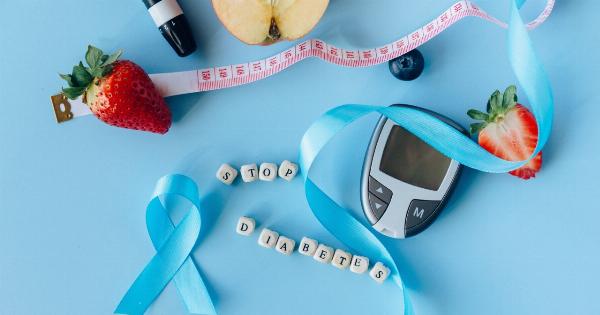Acne is a common skin condition that affects millions of people worldwide.
While several factors contribute to the development of acne, including hormonal imbalances, stress, and genetics, research suggests that diet may also play a role in the appearance and severity of acne. Certain foods have been linked to increased acne breakouts and inflammation in the skin. By avoiding these acne-causing foods, you may be able to prevent or reduce the occurrence of acne and improve the overall health of your skin.
1. Dairy Products
Dairy products, especially those that are high in fat and hormones, have been associated with acne.
Milk and other dairy products contain hormones that can disrupt the natural hormone balance in your body, leading to increased sebum production and clogged pores. Additionally, milk contains insulin-like growth factor 1 (IGF-1), which has been shown to stimulate the production of skin cells and increase oil production.
To control acne, consider reducing your intake of milk, cheese, yogurt, and other dairy products.
2. High-Glycemic Foods
High-glycemic foods, such as white bread, pasta, sugary snacks, and sodas, are rapidly absorbed by the body, causing a sharp increase in blood sugar levels.
This spike in blood sugar triggers a cascade of hormonal responses that can lead to inflammation and increased sebum production, both of which contribute to acne development. Opt for low-glycemic alternatives like whole grains, fruits, and vegetables to help stabilize your blood sugar levels and reduce the risk of acne breakouts.
3. Processed Foods
Processed foods are often high in refined carbohydrates, unhealthy fats, and artificial additives. These foods lack essential nutrients and are believed to contribute to inflammation and hormonal imbalances, both of which are associated with acne.
Avoid or minimize consumption of processed foods like chips, fast food, packaged snacks, and sugary treats. Instead, focus on a diet rich in whole, unprocessed foods like fruits, vegetables, lean proteins, and healthy fats.
4. Foods Rich in Omega-6 Fatty Acids
Omega-6 fatty acids are essential fats that our bodies need for various functions. However, an excessive intake of omega-6 fatty acids, primarily from vegetable oils like soybean, corn, and sunflower oils, can promote inflammation in the body.
Inflammation plays a crucial role in the development and severity of acne. To maintain a healthy balance, limit your consumption of foods high in omega-6 fatty acids and increase your intake of omega-3 fatty acids, which have anti-inflammatory properties.
Good sources of omega-3 fatty acids include fatty fish, walnuts, flaxseeds, and chia seeds.
5. Spicy Foods
While there is no direct link between spicy foods and acne, some individuals may find that consuming spicy foods can trigger or worsen their acne breakouts.
Spicy foods, particularly those containing chili peppers or hot spices, can increase blood flow, dilate blood vessels, and potentially cause flushing and inflammation in the skin. If you notice a correlation between spicy foods and acne breakouts, consider reducing your intake of spicy foods or avoiding them altogether.
6. Chocolate
Chocolate is a beloved treat for many, but there is some evidence to suggest that it may contribute to acne development in certain individuals.
Chocolate contains compounds like sugar, dairy, and artificial additives, some of which may trigger acne breakouts or exacerbate existing acne. While the connection between chocolate and acne is not yet fully understood, it may be worth limiting your chocolate consumption or opting for dark chocolate with a high cocoa content, which is lower in sugar and dairy.
7. Saturated and Trans Fats
Saturated and trans fats, commonly found in fried foods, processed snacks, and baked goods, can increase inflammation in the body and worsen acne symptoms.
These fats are not only detrimental to overall health but may also disrupt hormonal balance, leading to increased sebum production and inflammation in the skin. Opt for healthier fats like those found in avocados, olive oil, nuts, and seeds, which provide essential nutrients and promote skin health.
8. Excessive Sodium
A diet high in sodium can cause water retention and lead to bloating and inflammation throughout the body, including the skin.
Excess sodium intake can contribute to acne flare-ups and worsen existing acne by increasing inflammation and impairing the body’s natural detoxification processes. Limit your consumption of processed and packaged foods that are often high in sodium and instead focus on fresh, whole foods seasoned with herbs and spices.
9. Caffeine
Caffeine is a stimulant that can temporarily boost energy levels and improve focus. However, excessive caffeine consumption, especially from beverages like coffee and energy drinks, can disrupt hormone balance and increase cortisol levels in the body.
Elevated cortisol levels may promote inflammation and worsen acne symptoms. If you’re prone to acne breakouts, consider reducing your caffeine intake or switching to decaffeinated alternatives.
10. Artificial Sweeteners
Artificial sweeteners are commonly found in low-calorie or sugar-free products such as diet sodas, sugar-free candies, and processed desserts.
Some studies suggest that artificial sweeteners can disrupt gut health and promote inflammation, which may contribute to acne development. Additionally, consuming artificial sweeteners can trigger cravings for sweet foods and lead to overeating, potentially aggravating acne symptoms. Opt for natural sweeteners like stevia, honey, or maple syrup in moderation instead.
While certain foods may worsen acne symptoms in some individuals, it’s important to remember that everyone’s body is unique. What triggers acne breakouts for one person may not affect another.
Keeping a food diary and tracking your skin’s response to different foods can help you identify your own acne triggers. Additionally, maintaining a balanced diet rich in fruits, vegetables, whole grains, lean proteins, and healthy fats while staying hydrated can support overall skin health and reduce the likelihood of acne breakouts.





























